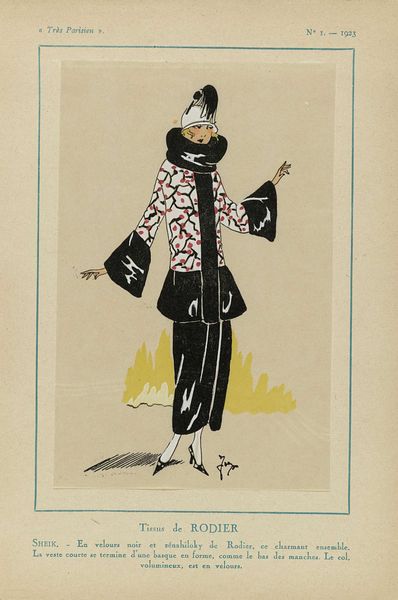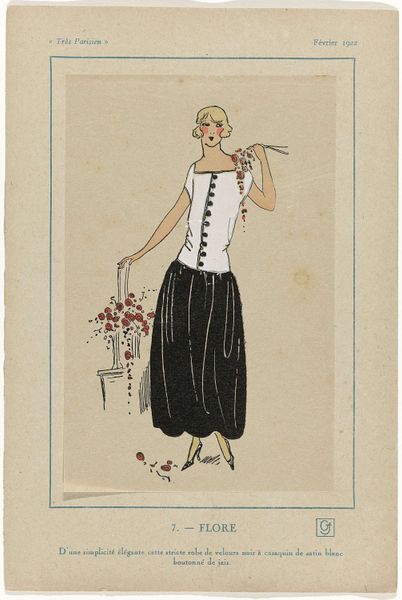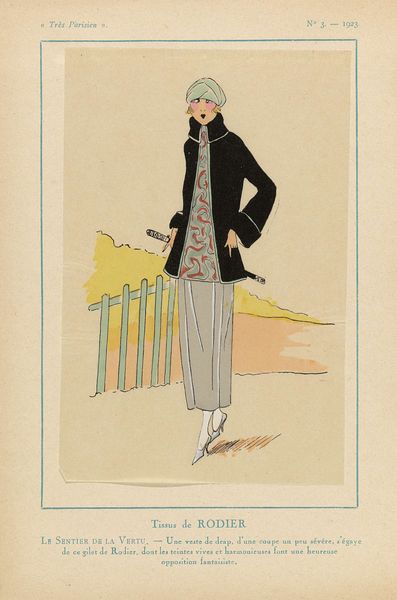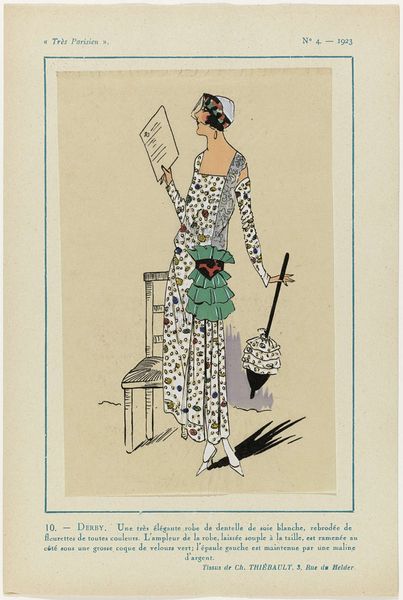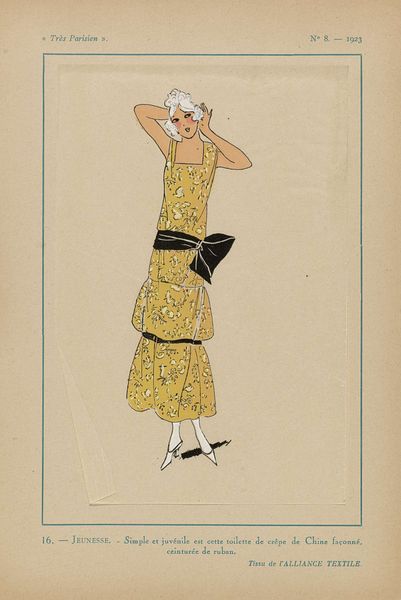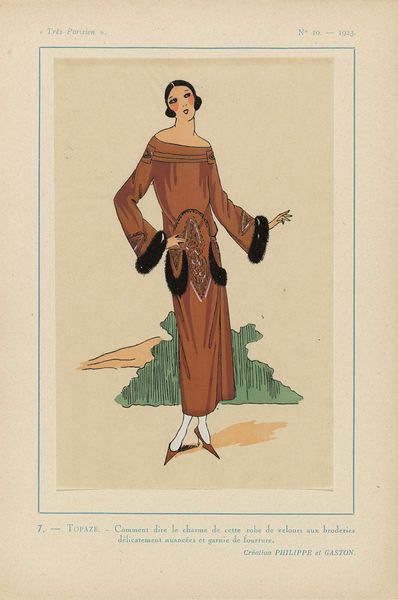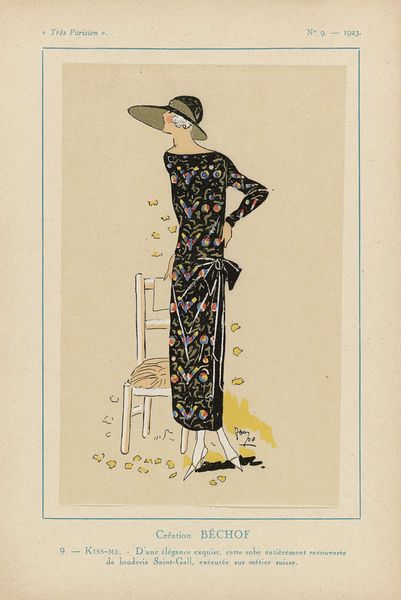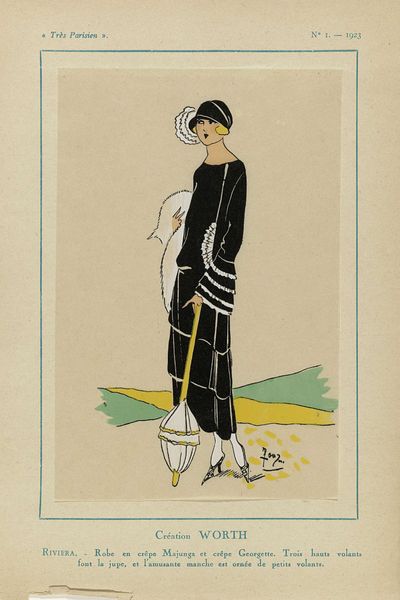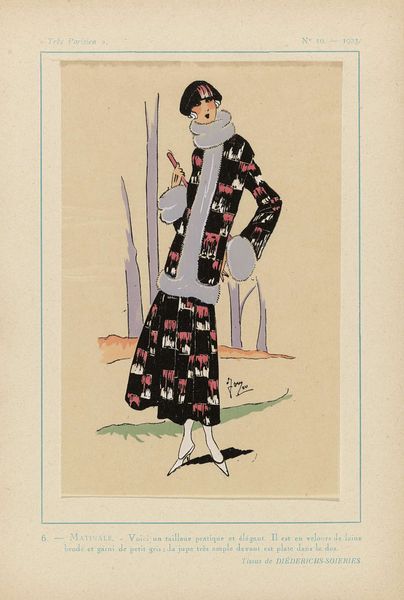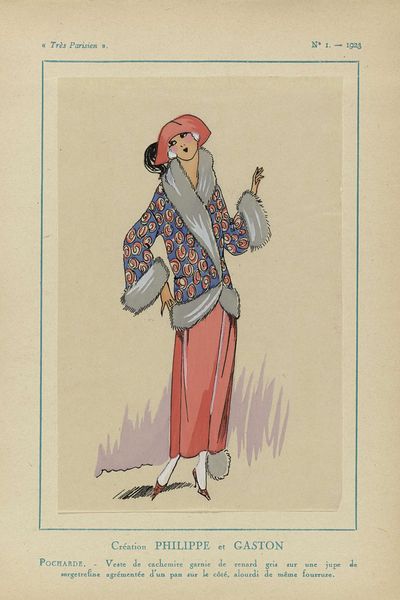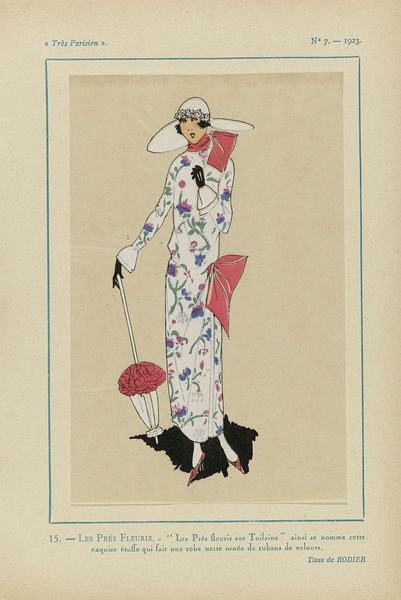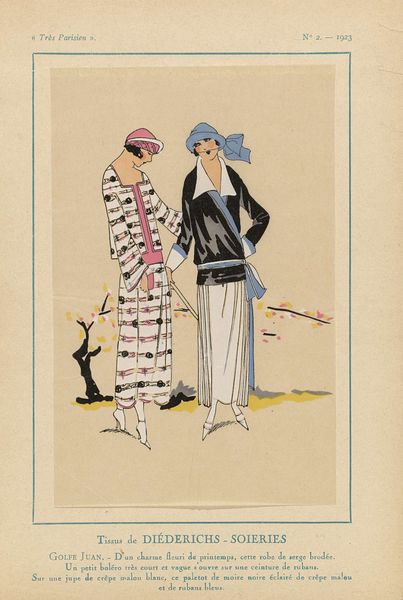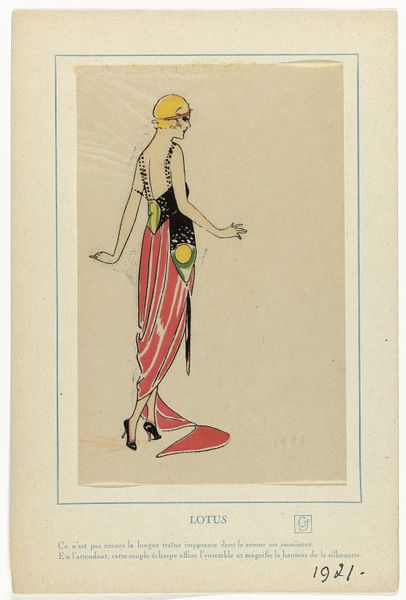
print, watercolor
#
portrait
#
art-deco
# print
#
figuration
#
watercolor
#
historical fashion
#
watercolour illustration
#
dress
Dimensions: height 269 mm, width 180 mm
Copyright: Rijks Museum: Open Domain
Curator: Here we have "Très Parisien, 1923, No. 3: Creation de PAQUIN. Sobre Elégance..." It’s a watercolor and print work from 1923, housed here at the Rijksmuseum. Editor: Immediately, I'm struck by the stark black and white against that pale peach background. It’s incredibly stylish, but there's also a slightly melancholy air to it. Curator: Melancholy? I see more of a cool detachment, reflecting the era’s fascination with modern life, technology, and almost robotic representations. The recurring vertical lines in both dress and background can be read as skyscrapers, hinting to rapid industrial growth. Editor: Perhaps. I'm drawn to the actual *making* of this print. The contrast in textures – smooth watercolor washes against sharp print lines—suggests an almost assembly-line process. There's this blend of artisanal craft and mass production that really epitomizes the shifting landscape of art in the 1920s. Curator: Indeed, this play of textures invites an inquiry into the symbolism. That cloche hat, the delicate embroidery collar, the ribboned umbrella – each item signifies a status, aspiration and sophistication of the flapper archetype and of new freedoms gained. The sharp angularity mirrors social disruption and reinvention. Editor: And this isn't "high art," is it? More of an applied art intended for consumption and aspiration. It says so much about the democratization of fashion—where trends become quickly absorbed, translated, and commodified. A print run enables circulation, wider consumption and influence. Curator: It absolutely speaks to that wider audience, setting a stage for an elaborate social ritual where appearances dictated identity, where clothes themselves played a role, defining the characters as independent and refined women in society. Editor: I still find myself thinking about the material process. That fine embroidery implies hours of skilled labor now readily accessible and quickly reproduced via these print formats to fuel consumer fantasies. Curator: It gives us insight into how cultural memory evolves. That's a wrap for this audio guide piece, hopefully, we will see more how art acts as mirror to time and social change! Editor: Exactly. We can use its production as an analysis to discuss these transformative cultural narratives that it invokes. Thanks.
Comments
No comments
Be the first to comment and join the conversation on the ultimate creative platform.

